American History for Truthdiggers: Whose Revolution? (1775-1783)
For slaves and Native Americans, the Revolution wasn’t “radical”: It was one more colossal effort to enforce Western conservative values and preserve the privileges of whites and the rich. In this detail of “The Death of Major Peirson,” a painting by John Singleton Copley, a slave is shown fighting for the British in an 1871 battle in Europe. Across the Atlantic, many slaves sought to win freedom by fighting on the British side against the colonists in the American Revolutionary War.
In this detail of “The Death of Major Peirson,” a painting by John Singleton Copley, a slave is shown fighting for the British in an 1871 battle in Europe. Across the Atlantic, many slaves sought to win freedom by fighting on the British side against the colonists in the American Revolutionary War.
To mark the Fourth of July, Truthdig is reposting this April 7 installment from its “American History for Truthdiggers” series. In the essay, Danny Sjursen explores the American Revolution.
Editor’s note: The past is prologue. The stories we tell about ourselves and our forebears inform the sort of country we think we are and help determine public policy. As our current president promises to “Make America great again,” this moment is an appropriate time to reconsider our past, look back at various eras of United States history and re-evaluate America’s origins. When, exactly, were we “great”?
Below is the sixth installment of the “American History for Truthdiggers” series, a pull-no-punches appraisal of our shared, if flawed, past. The author of the series, Danny Sjursen, an active-duty major in the U.S. Army, served military tours in Iraq and Afghanistan and taught the nation’s checkered, often inspiring past when he was an assistant professor of history at West Point. His wartime experiences, his scholarship, his skill as a writer and his patriotism illuminate these Truthdig posts.
This article completes Sjursen’s survey of the American War of Independence, begun in last Saturday’s installment. The series will resume two weeks from now.
Part 6 of “American History for Truthdiggers.” / See: Part 1; Part 2; Part 3; Part 4; Part 5.
* * *
“The war [of independence] was not just about home rule, but about who would rule at home.” —Historian Carl Becker
“The History of our Revolution will be one continued lie from one end to the other.” —John Adams (1790)
Just how radical was the American Revolution? Historians have debated that question for the better part of a century. A true consensus still escapes us. Nonetheless, the debate itself is instructive and tells us something of the nature of this experience.
No doubt, the American version of revolution lacks many of the standard symbols of radical revolution as we’ve come to perceive them, with neither the guillotines of France (1789-1794) nor the gulags and purges of Russia (1917-1923). Still, there was an 18th-century radicalism, all its own, to the American experience.
Pennsylvania was one hotbed of radical egalitarianism. As early as 1775, radicalism erupted in the Philadelphia militia. The radicals labeled themselves the Associators and proclaimed an agenda for (armed) social reform in the colony. Six decades before Karl Marx began writing, they sought to curb the individual accumulation of excess wealth and called for universal white male voting (regardless of financial status) and a general opening up of economic and political opportunity to the masses.
The power of the impassioned masses (or mob) continued throughout the war, especially in its early phases. After being read the Declaration of Independence, New York City patriots used a rope to pull down an equestrian statue of King George III at Bowling Green. The crowd then demolished the statue, cutting off the head and mutilating the face. The scene calls forth memories of the toppling of Saddam Hussein’s statue in Baghdad’s Firdos Square in 2003. As a final radical act, the patriots melted down the statue into 42,000 musket balls for the Continental Army to fire at the king’s soldiers.
It must be remembered that simultaneous with and subsequent to the drafting of the Articles of Confederation for the United States, each individual state tackled the serious business of crafting its own, new constitution. Some were rather conservative documents, others quite radical and egalitarian. Indeed, in only two states—Virginia and Delaware—did the initial revolutionary constitutions maintain property requirements for voting (though many postwar constitutions later reinstituted property restrictions). In the excited frenzy of revolution, many elites “lost control” of the masses. This made many leaders, John Adams among them, uncomfortable.
States such as Pennsylvania experienced what historian Gary Nash called “a revolution within a revolution,” instituting universal male suffrage, a powerful unicameral legislature, and early steps to abolish slavery. Thomas Paine’s hand was again at work in this business, seeking to make Pennsylvania “the most advanced democracy in the world.” Vermont, too, had a radical trajectory, becoming the first state to ban slavery outright, in 1777. New Jersey even extended voting rights—however temporarily—to women, something no other state would achieve until Wyoming did so nearly a century later, in 1869.
Furthermore, the civil aspect of this war, as we saw in the previous installment of this series, added to the radicalism of the revolution. Though there were no guillotines in Philadelphia or Boston, there were, by war’s end, more land cessions and flight by loyalists (mostly to Canada), per capita, than in the later French Revolution.
Still, for all this evidence—and much more like it—there remains something ultimately unpersuasive about the “highly radical revolution” argument: It ignores the experience of non-white males. It must be remembered that while, in a sense, the revolution had quite radical components for those white men—even those without property—the experience and outcome of revolution appeared far less radical, and more conservative, when seen through black or Indian eyes. That, ultimately, explains the geographic (focused on the Northern colonies), racial and gender limitations of historian Gordon Wood—made famous by a memorable scene in the film “Good Will Hunting”—and his esteemed book “The Radicalism of the American Revolution.”
The Forgotten Fifth: When Freedom Wore a Red Coat—The Slave Revolution
“Your 4th of July is a sham; your boasted liberty, an unholy license … your shouts of liberty and equality, hollow mockery.” —Frederick Douglass (1852)
Examine the fragment of the painting at the top of this article. In it, a proud, dashing black soldier (with a plume in his cap) fights on the British side against the French in a 1781 battle in Europe. In the American War of Independence, too, African and African-American slaves often took up arms with the British against the colonists. Many were members of the 1st Ethiopian Regiment, raised in November 1775 by the royal governor of Virginia, Lord Dunmore, in a famed proclamation that bore his name. Stitched into the uniform of each member of the Ethiopian Regiment were three words: “Liberty to Slaves.”
Many of us, at least among those of a certain age, will remember the scene from the (terribly inaccurate) 2000 movie “The Patriot,” starring Mel Gibson. A black man and former slave joins the Continental Army and by the final battle wins the respect of even the most bigoted soldier in the Gibson character’s unit. It’s a touching moment, and, indeed, some 5,000 blacks—slave and free—would fight on the patriot side. The film, along with many other popular depictions of the Revolutionary War, gives us the impression that however imperfect American society was, most blacks fought on the colonists’ side. Nothing could be further from the truth. Proportional to their numbers in the population, black men were more likely than whites to serve as combatants in the revolution; only, by and large, they fought against the side that had proclaimed all men were created equal.
This is a dizzying, inconvenient fact for some. It complicates and potentially sullies the Revolutionary effort. But it is a fact we must know to describe the totality, warts and all, of our revolution. Lord Dunmore raised 800 to 1,000 slave volunteers by offering freedom to those who would flee their masters and gather under his banner. Word of Dunmore’s proclamation spread rapidly through the colonies, giving hope to slaves and striking fear in planters throughout the Americas. It convinced many fence-sitting slave holders that there could now be no reconciliation with the crown. As Edward Rutledge, a South Carolina signer of the Declaration of Independence, wrote, the Dunmore proclamation effected “an eternal separation between Great Britain and the colonies … more than any other expedient.”
Indeed, across the colonies, especially in the South, slaves escaped their plantations and sought refuge wherever and whenever the British army passed by or occupied a sizable locale. One military historian, Gregory Urwin, penned an influential article on this phenomenon, aptly titled “When Freedom Wore a Red Coat.” Think on that for a moment. Most runaways sought their liberty by joining the British cause, not that of the patriots. What might that say about our revolution? Was it thus no more than a contradiction, counter-revolutionary, and a farce? Perhaps, but once again matters are not clear-cut.
At war’s end, the British actually sailed away from America with many thousands of slaves. No doubt they left behind some who had helped the British cause, and they sold or returned others, but, by and large—and to their great credit—most British generals refused the demands of local colonists to return all of their slaves. At least a few of the slaves who left with the British had belonged to George Washington. Ouch. One must consider the further irony that white patriots had for two decades regularly used the terms “enslavement” and “slavery” to describe their treatment by Britain’s Parliament and tax collectors.
Among the blacks who had fought alongside the British, many earned a new life after the war. Some 1,500 families settled in Birchtown, Nova Scotia, in Canada. Disease and a harsh climate decimated the former slaves, but at least they were free. Some years later, in 1792, more than a thousand set out for the west coast of Africa, where they founded a new city, the aptly named Freetown, now the capitol of Sierra Leone.
These stories are inspiring and give us valuable insight into the two sides of the revolutionary struggle. Still, we have to be careful not to overstate the benevolence of British actions toward the slaves. These were, at root, military, not humanitarian, gestures, and we cannot ignore the opportunism and self-interest in Lord Dunmore’s proclamation. It’s important to note that Dunmore extended the promise of freedom only to those slaves who were owned by rebellious patriot masters. Loyalists could keep their human property, and, indeed, many did bring their chattel slaves along into prolonged exile in Canada. Compared with Carolina, Canada was free, but it was by no means a slave utopia.
Still, viewed broadly, the vast majority of slaves either favored, served with or fought for the British rather than the patriots during the war. And, well, the enraged planter class never let them forget it. Though this is almost entirely lost to modern readers, the Revolution was also the greatest slave rebellion in American history. It terrified the owner class and tightened an increasingly brutal slave system. The tragic irony, as historian Ira Berlin has shown, is that the great slave revolt of 1775-83 spooked Southern planters into developing a more stringent, controlled and vigorous Antebellum slave system than that which existed before the Revolution. Millions of blacks would come to live under the lash of that slave society, the image to which we’ve grown accustomed.
The Other America: The Revolution Looking East From Indian Country
“Lay waste all the [native] settlements around … that the country may not be merely overrun but destroyed. … Rush on with the war whoop and fixed bayonet.” —George Washington, official orders to Gen. John Sullivan (1779)
Fifteen years ago, an excellent historian by the name of Daniel K. Richter penned a comprehensive native history of early America, with the paradigm-shifting title “Facing East From Indian Country.” Perhaps facing east is what a historian must do when considering Native Americans in American history, including the Revolution: To view Indian experiences, face eastward, rather than start from the Atlantic coast and view the unfolding of history solely in a westward direction. How different the situation must have appeared to the Creek tribe southwest of the colonies or the Iroquois to the northwest of New York.
Just as the slaves realized that their interests were better served with the redcoats, the Native Americans recognized that their autonomy had a better chance of being preserved if they allied with the supposed imperial tyrants and against those who ostensibly extolled the inalienable human right to liberty. Native life, liberty and happiness could, they believed, be maintained only by standing in opposition to the purported patriots.
And so it was that most Indians fruitlessly waged war while allied with one imperial power—the British—to stave off the encroachment of a new, more dangerous, colonial empire, what Thomas Jefferson once called an “empire of liberty.” The outcome was tragic.
As we saw during the French and Indian War, the list of Southern colonial patriots is also a who’s who of land speculators in early America. Washington, Jefferson, Patrick Henry, they all were in on it at one time or another. Now, in the desperation of war, the speculation game changed again. Recruiting for the Continental Army—a miserable, long, thankless duty—became difficult as the war dragged on. Recruiting officers, as ever, needed some way to entice enlistees. It became necessary to promise volunteers land, often Indian land, beyond the mountains, a total of 10 million acres. Native land was thus promised to future settlers without the permission, certainly, or even the knowledge, of the tribes.
On the long frontier stretching from Georgia to New England, war with the British intermingled with smaller wars against British-backed native tribes. This was often the most vicious fighting the Revolution would produce. Take the example of frontier warfare in northwestern New York state. One historian, Page Smith, called the American campaign in western New York “the most ruthless application of scorched-earth policy in U.S. history.” Here, Gen. Washington unleashed Gen. John Sullivan with orders to destroy the great Iroquois confederation, and shatter it he did. The Iroquois mostly sided with the British, though the Revolution kicked off an internal Iroquois civil war when one tribal branch, the Oneida, allied with the Continentals.
It got ugly, fast. Washington called the devastation of the Iroquois “the main American military effort of [1779],” and detached one-third of his army to accomplish the task. Villages were razed, 160,000 bushels of corn burned and thousands of fruit trees destroyed. Sullivan reported back to Congress that “except one town situated near the Allegheny … there is not a single town left in the country of the Five Nations [of Iroquois].” An Onondaga chief later summed up the experience thusly: “They [Sullivan’s troops] put to death all the women and children, excepting some of the young women, whom they carried away for the use of their soldiers and were afterwards put to death in a more shameful manner.” (Admittedly, of course, native atrocities along the settler frontier were also common.)
In the end, the war—and especially American victory in it—proved, as in the Seven Years’ War, to be yet another tragedy for Indians east of the Mississippi River. American colonists, millions that they were, were always more dangerous than a few thousand redcoats and a few hundred imperial bureaucrats spread thinly along the frontier. The United States of an America was an existential threat to the native way of life.
None of the affected tribes were included in negotiations toward the Treaty of Paris, which ended the Revolutionary War. No one consulted the Indians before the British saw fit to sign away millions of acres of native land to the new United States. Most native tribes would never accept such claims to their lands, which, to them, were predicated on the white man’s conception of international law, something that had little meaning to those living in Indian country.
This situation set up what would become a decade of on-again, off-again war between the armies of the new American Republic and the allied tribes of the Ohio Country in the years following the signing of the Treaty of Paris. The last barrier, the infamous British Proclamation Line of 1763, had been breached and the settler tide would never recede. In just over 50 years that incessant tide would reach the Pacific Ocean. Within a century, all overt native resistance was subdued, as tribes chose between genocidal extermination and a life on reservations.
Who Shall Fight for Liberty?: The Continental Army at War
“The insults and neglects which the army have met with beggars all description … they can endure it no longer. I am in rags. … I despise my countrymen. I wish I could say I was not born in America. I once gloried in it but am now ashamed.” —Lt. Col. Ebenezer Huntington, Yale graduate and veteran of battles in Boston, Long Island and Yorktown (July 1780)
When you picture an American Revolutionary soldier, what do you see? A minuteman, of course, a logo of the New England Patriots, perhaps. In reality, though the militia and Massachusetts minutemen played an important role, especially early in the conflict, most of the major fighting was done by Continental Army regulars, long-term volunteers filling Washington’s ranks. Who fought the war and how it affected them is a story unto itself. War changes society. As John Shy wrote, “the incidence of military service reflects and affects social structure.” That was never more true than during the Revolutionary era.
To understand the challenges and tribulations of waging an eight-year war through the combined efforts of 13 diverse colonies, one must understand a key but often-overlooked fact: Contrary to the linear, triumphalist fairy tales, support for the war and enthusiasm for military service actually consistently declined in the years leading up to the victory at Yorktown in 1781. Of course, one must remember, even as late as 1780, that few would have predicted that victory was likely at all, let alone so near. In this environment of protracted war, in truth it was Continental regulars who performed much of the fighting because militiamen—men of property and some substance—were tied to their farms, families and villages.
This is not to degrade the importance of the militia. They performed vital, short-duration, local service at key points in the war. Furthermore, it was the militia that waged a micro-revolution at the village level, enforcing patriot conformity in the townships and waging a civil war among neighbors.
Since the propertied militias were often unavailable or unwilling, it was to a considerable degree the dregs of society who filled the ranks of the Continental Army. These were the poor, the landless, the immigrants—mostly German and Irish—the former criminals, the wayward youths; those, to be frank, who were most expendable in respectable colonial society. It was the lowest among them who eventually won for the American side. In times since, it has always been thus.
Even so, it was only a tiny fraction of the population that actually experienced extended military service, and these poor souls were paid, if at all, in a currency—continental dollars—that was soon nearly worthless. Due to rampant inflation and the doubtful prospects of an often failing war, between 1777 and 1781 the value of 100 continental dollars fell to less than $2 in gold specie. The poorest of men were fighting for nearly worthless slips of paper. The frustration, and resentment, was palpable. In May 1780, just one year before victory was at hand, Pvt. Joseph Plumb Martin, a seasoned veteran of the Connecticut Line regiments, observed that “the men were exasperated beyond endurance. They could not stand it any longer … here was the army starved and naked, and their country sitting still and expecting the army to do notable things.”
In the winter of 1780-81, matters spiraled out of control and Washington had a veritable crisis on his hands. In January, the Pennsylvania Line mutinied, shot some of the officers and marched on Philadelphia to demand back pay from Congress. Washington and Congress folded and negotiated a settlement. Days later, the New Jersey Line mutinied, and this time Washington sought to create an example. He ordered executions, though, in passive protest, all six members of the appointed firing squad purposely missed their targets. By this point, some 1 in 4 of Washington’s soldiers were in revolt. The army held together, just barely, and would march south to Yorktown, Va., and climactic victory just months later.
* * *
“The American war is over, but this is far from being the case with the American Revolution. On the contrary, nothing but the first act of this great drama is closed.” —Dr. Benjamin Rush (1786)
Sometimes, in hindsight, we readers know too much, are too informed of the outcomes to appreciate the contingency and emotional drama of what unfolded. In this case, the messy experience of an eight-year revolution and war of independence shaped the new American Republic. Through this crucible did 13 colonies cohere, sometimes fragment, and ultimately unite. As the historian Carl Becker wrote, the War of Independence was about more than “home rule”; it was also about “who would rule at home.” John Shy has called the revolution a “political education for the masses,” and indeed it was.
The war itself was messy, and brutal. The stats are instructive: 150,000 to 200,000 colonists performed some military service, about 10 percent of the population; 25,000 Americans perished in the war (about 8,000 in battle, 8,000 of disease, 8,000 on filthy British prison barges), or more than 2 million in today’s terms; 100,000 citizens chose exile over residence in the new republic (60,000 loyalists and 40,000 slaves), or some 8 million in contemporary measures.
So, how did it actually happen—the victory, the colonial victory, that is? How and why did a rabble of patriot colonials ultimately triumph over the British Empire? There are many reasons. The British faced 3,000 miles of ocean to compound their significant logistic and communications challenges. Limited guerrilla warfare contributed to their anguish. Gen. Washington, though he rarely won, managed to keep the Continental Army in the field and in existence.
In a sense, the rebels won because they did not lose. By virtue of their survival they prevailed. This is often the case in popular uprisings, and why it was—and still is—so difficult to pacify a rebellious population with military force. Still, Americans mustn’t forget that there might be no United States without the French, and eventually the Spanish, entry into the war on the patriot side. To a large extent, larger than most Americans are comfortable with, the U.S. owes its independence to France. So, the next time you’re about to insult the French, first give thanks. Without the French army, and more vitally the French navy, transforming our revolution into a global war, the conflict couldn’t have ended when and how it did—with a British army encircled by land and sea on the Virginia coast at Yorktown.
Maybe the Americans could have won without the French, or maybe not, or perhaps it would have taken several more years and the war would have done even more damage to society. What is certain, as John Shy tells us, is this: “a protracted war, especially one so reliant on popular, more or less voluntary military service, is itself a kind of revolution.” In fighting the war, the fighting men, and their families, experienced a revolution of their own.
What, then, in the final sense, can one make of the American Revolution? This much, at least, I’d submit: the Founders were neither the infallible demigods depicted by the contemporary political right, nor, for that matter, pure villains to be pilloried, as some on the left would have it. These were imperfect human beings—men, mostly—striving toward independence and tenuously remaking a society.
Taking into account women, slaves and Indians, the patriot Founders excluded probably 60 to 70 percent of the American population from their dreams of life, liberty and happiness pursued. This does not, though, in itself, erase the beauty of the Founders’ aspirations, words and actions. Rather, I take these salient facts as a warning against all forms of rigid originalism, legal or otherwise—as a warning against the notion that our revolution and forebears ought to remain frozen in their 18th-century moment.
Instead, the imperfection, and ambitions, of the Founders might remind 21st-century Americans to beware the misuse of the past, and to always seek the gradual improvement of society and the achievement of a more perfect union. In that sense, this author agrees with Benjamin Rush that, as he said in 1786, the American Revolution is not over, that naught but a few acts of the great drama have closed. We, today, are waging revolution still.
* * *
To learn more about this topic, consider the following scholarly works:
● James West Davidson, Brian DeLay, Christine Leigh Heyrman, Mark H. Lytle, and Michael B. Stoff, “Experience History: Interpreting America’s Past,” Chapter 7: “The American Revolution, 1775-1783” (2011).
● Alfred Young and Gregory Nobles, “Whose American Revolution Was It? Historians Interpret the Founding” (2011).
● Edward Countryman, “The American Revolution” (1985).
● Gary B. Nash, “The Unknown American Revolution: The Unruly Birth of Democracy and the Struggle to Create America” (2005).
● John Shy, “A People Numerous and Armed: Reflections on the Military Struggle for American Independence,” revised edition (1990).
● Jill Lepore, “The Whites of Their Eyes: The Tea Party’s Revolution and the Battle Over American History” (2010).
Maj. Danny Sjursen, a regular contributor to Truthdig, is a U.S. Army officer and former history instructor at West Point. He served tours with reconnaissance units in Iraq and Afghanistan. He has written a memoir and critical analysis of the Iraq War, “Ghost Riders of Baghdad: Soldiers, Civilians, and the Myth of the Surge.” He lives with his wife and four sons in Lawrence, Kan. Follow him on Twitter at @SkepticalVet and check out his new podcast, “Fortress on a Hill,” co-hosted with fellow vet Chris “Henri” Henrikson.
[The views expressed in this article are those of the author, expressed in an unofficial capacity, and do not reflect the official policy or position of the Department of the Army, Department of Defense, or the U.S. government.]
Your support matters…Independent journalism is under threat and overshadowed by heavily funded mainstream media.
You can help level the playing field. Become a member.
Your tax-deductible contribution keeps us digging beneath the headlines to give you thought-provoking, investigative reporting and analysis that unearths what's really happening- without compromise.
Give today to support our courageous, independent journalists.
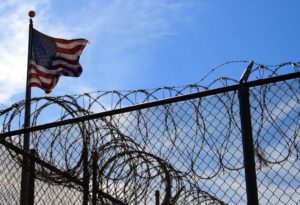
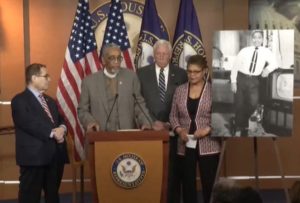

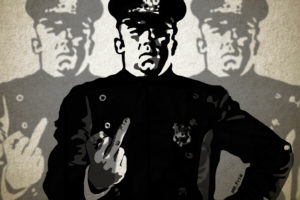
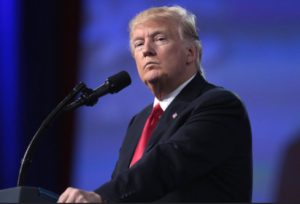
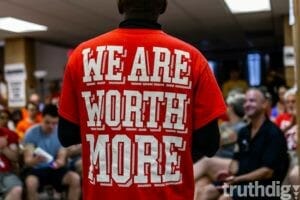
You need to be a supporter to comment.
There are currently no responses to this article.
Be the first to respond.